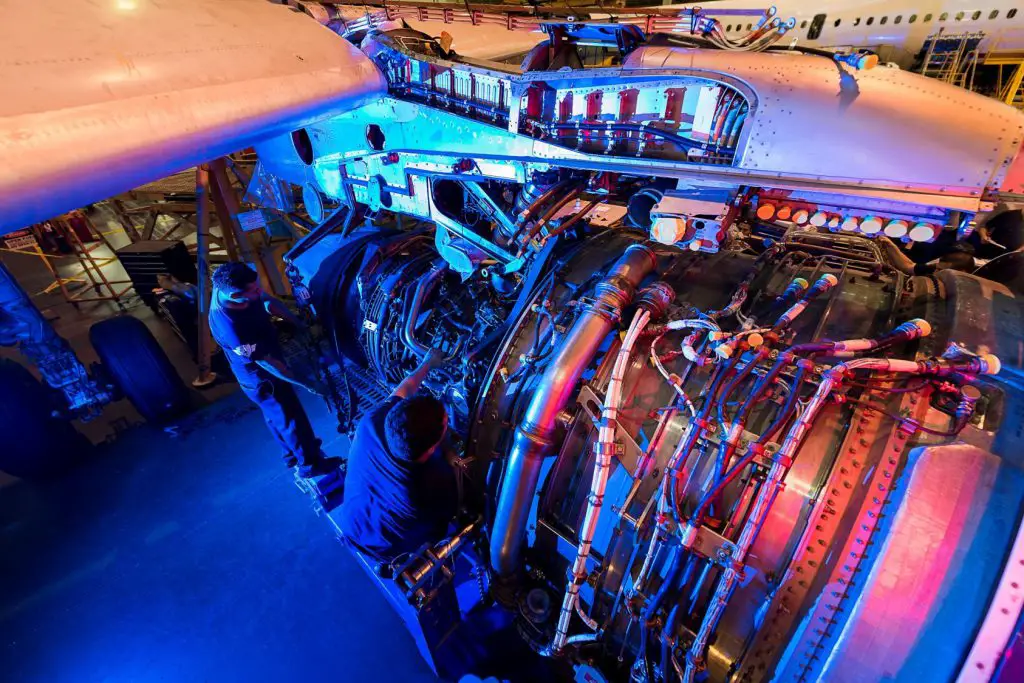The aerospace & defense industry has been an early adopter of digital technologies, relying on them from the first design stages to deployment and beyond. One crucial digital technology that has profoundly transformed aerospace & defense manufacturing is computer-aided design, or CAD for short.
According to a report published by Research and Markets, the global CAD market in the aerospace and defense industry is expected to grow at a CAGR of 6.13% between 2016 and 2020. With multiple feature-packed solutions to choose from, selecting the best CAD software for the aerospace & defense industry can be a real challenge, which is why we decided to write this article.
Table of Contents
What Is a CAD Software Application?
Computer-Aided Design software is a type of software application used by designers and engineers to create two-dimensional or three-dimensional models of real physical components. The first CAD software appeared in the 1960s, and it has since then completely replaced the traditional approach to design and engineering, which involved a pen and paper and a lot of tiresome manual work.
Main Features of CAD tool
The most important feature of a CAD software application is its ability to create and shape 2D and 3D objects using tools such as extrude, cut, and revolve. Most CAD software applications used in the aerospace & defense industry are parametric, so designers and engineers can precisely change individual parameters of the 2D and 3D objects they’ve created to meet even the strictest specifications.
In addition to creating and shaping 2D and 3D objects, CAD software applications and simulate and verify complex mechanical assemblies and cyber-physical systems, formulate the design and manufacturing of electrical systems, and facilitate the design and manufacturing of fluid systems, among other things.
With CAD software, it’s extremely easy to turn an idea into a 3D-printed model and progressively iterate and improve it until it’s perfected. Some developers of CAD software are exploring the possibilities of generative design, to quickly generate multiple design alternatives from a single idea to save weight, reduce environmental impact, and increase safety.
Aerospace & Defense Industry-Specific Needs
Aerodynamics and aircraft designs require a high level of accuracy and efficiency. When the cost of an iteration can be in millions of dollars, and when a difference of less than a tenth of a millimeter can cause a catastrophic failure, selecting the perfect and most efficient CAD software application becomes essential.
Because different CAD software applications generally have different mathematical recipes used to define object geometry, it’s important to ensure that the geometry differences fall within tolerance when trading data between partners and departments.

How to Select CAD Software for Aerospace & Defense
When selecting a CAD software application for the aerospace & defense industry, it’s best to stick with the most widely used CAD programs to maintain compatibility with OEMs and supply chains. While there are many different CAD software applications on the market, only a few are used by major aerospace & defense companies.
Getting assistance from Industry experts:
Connecting with Aerospace & Defense industry experts is one of the alternative solution in order to ask the different question that you have and to seek the advices that you need. Feel free to have a look at the services providers that we listed for you in the following categories:
Best CAD Software for Aerospace & Defense application
Autodesk – Product design & Manufacturing collection
Autodesk is well know when talking about CAD softwares and the Product design & Manufacturing collection includes Inventor, AutoCAD, Inventor Nastran, Inventor CAM, Fusion 360, and more. Several Aerospace & Defense key players are using Autodesk solutions which made this suite of tools at the top of our ranking.
Catia by Dassault Systemes
Catia by Dassault Systèmes is definitely the most widely used CAD software application in aerospace & defense. It’s used by government contractors like Northrop Grumman, BAE Systems, and Lockheed Martin, delivering the ability to model a product in the context of its real-life behavior. Catia offers a social design environment that allows real-time concurrent design and collaboration across all stakeholders, and its features span everything from prototyping to digital analysis to simulation.
Inventor by Autodesk
Autodesk is known mostly for AutoCAD, which is used by architects, engineers, and construction professionals who rely on it to create precise 2D and 3D drawing, but it also offers a professional-grade 3D mechanical design, documentation, and product simulation tool, called Inventor, that is powerful, precise, and efficient enough for use in the aerospace & defense industry.
NX by Siemens PLM Software
Used by GE Aviation, NX by Siemens PLM Software has been available for nearly a half-century, this advanced high-end CAD software application enables aerospace & defense companies to realize the value of the digital twin, allowing them to deliver better products faster and more efficiently. NX has built-in tools for drafting and documentation, and its distinctive design and styling gives companies a competitive advantage.
Solid Edge by Siemens PLM Software
From mechanical and electrical design to simulation, manufacturing, technical publications, data management, and beyond, Solid Edge by Siemens PLM Software allows aerospace & defense to effortlessly digitalize their entire product development process by combining the speed and simplicity of direct modeling with the flexibility and control of parametric design.
SolidWorks by Dassault Systèmes
First released in 1995, SolidWorks by Dassault Systèmes is a CAD software application for the Windows operating system that directly competes with PTC Creo, Solid Edge, and Autodesk Inventor, utilizing a parametric feature-based approach and empowering designers and engineers with an integrated suite of tools that helps them get the job done faster and better.
Creo by PTC
Creo by PTC, formerly known as Pro/Engineer, is used by Lockheed Martin and several other aerospace & defense companies. Creo offers expanded capabilities to meet any requirements, including modeling and design, simulation and analysis, augmented reality, smart connected design, additive manufacturing, and model-based definition. Creo is fully compatible with other PTC products, such as PTC Integrity, PTC Mathcad, PTC Windchill, and Servigistics.
ADS (Aircraft Design Software) by Optimal Aircraft Design
ADS is used to make a complete conceptual design of a single- or twin-engine light aircraft, making it particularly suitable for professional aircraft designers and homebuilders. This CAD software application is available in five different packages, the most capable of which is ADS Professional. A special version of ADS is available for universities and academic institutions.
TurboCAD by IMSI/Design
Compatible with Windows and macOS, TurboCAD is a CAD software application with tools for 3D Solid & Surface modeling. The tool includes 2D geometric and dimensional constraints. It was initially released in 1986, and its features have been steadily expanded ever since. They now include support for 2D drafting, 3D surface modeling, photorealistic rendering, dimensioning and annotation, and more. A free trial of TurboCAD is available for free on its official website.
SharkCAD Pro by Punch!CAD
SharkCAD Pro by Punch!CAD is a professional CAD software application that provides a comprehensive and intuitive collection of 2D/3D drafting and modeling tools at an affordable price. Its 3D printing tools help prepare and validate designs to be 3D printer ready, and its support for an unprecedented number of formats to share 3D content helps designers and engineers collaborate with others.
OpenVSP (Vehicle Sketch Pad) by NASA
Developed by NASA, OpenVSP is a parametric aircraft geometry tool that can be used to create a 3D model of an aircraft defined by common engineering parameters. NASA released it as an open-source project under the NASA Open Source Agreement (NOSA) on January 10, 2012, and it has since then been developed and maintained by a group of enthusiastic developers from all over the world.
Conclusion
Known for driving innovation and embracing the latest digital technologies, the aerospace & defense industry has become dependent on CAD software application, relying on them at practically every stage of a product’s design. The best CAD software application for aerospace & defense offer a whole host of useful features that help designers and engineers work more efficiently and accurately.
Read our other software reviews
One of Aerospace Export’s main guideline is to promote innovative content targeting the Aerospace and Defense industry. Following this guideline, we have been working on few other software reviews that you could directly access here:
Get more information on how we review the different tools
CONTACT US TO REVIEW YOUR TOOL
If you are a tool editor and believe that your tool should be mentioned in our review, please send us a message below and we will get in touch with you. We are constantly updating our ranking with the tools that we believe to be the more relevant for the Aerospace & Defense market.









